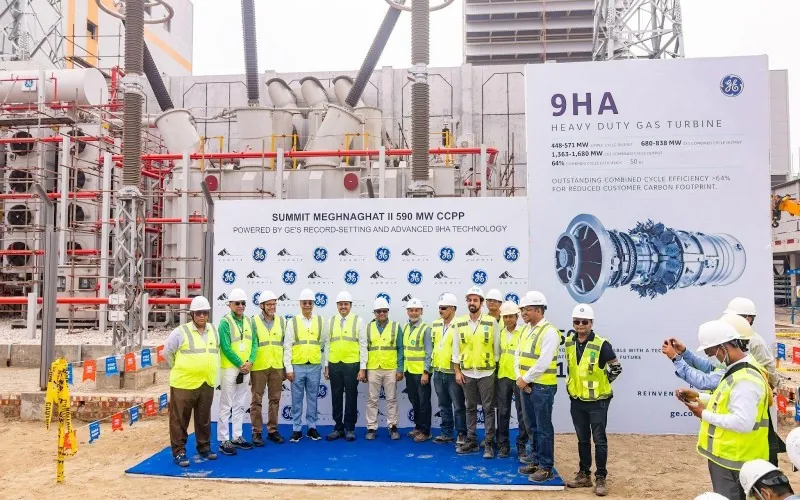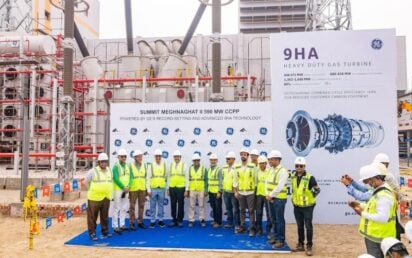In September 2023, Muhammed Aziz Khan, founder and chairman of Summit Group, announced an investment plan to develop clean energy projects across South Asia. This initiative was designed to diversify Summit’s power portfolio while addressing Bangladesh’s growing energy demands with renewable sources .
At the core of the plan is a framework to import clean electricity into Bangladesh from neighboring countries. The initiative reflects Summit Group’s recognition of Bangladesh’s geographical constraints for developing large-scale renewable energy projects domestically.
“We have signed memorandums of understanding with large Indian companies. This will be the cheapest form of electricity for Bangladesh, cheaper than even natural gas-based power,” Khan explained in a statement at the time.
Bangladesh’s Renewable Energy Challenges
Bangladesh faces significant obstacles in developing domestic renewable energy capacity, particularly due to its limited land availability. With just over 130,000 kilometers of land area and a population of approximately 170 million, Bangladesh ranks among the world’s most densely populated countries. This geographical reality severely constrains the nation’s ability to develop utility-scale solar or wind projects within its borders.
According to Bangladesh government data, renewable energy currently accounts for only about 4.5% of the country’s total installed power capacity of 22,215 MW, with solar power representing about 80% of the total renewable capacity.
Despite these limitations, Bangladesh has set ambitious renewable energy targets: 15% by 2030, and 40% by 2041. Meeting these goals requires innovative approaches beyond domestic generation capacity.
Muhammed Aziz Khan has been forthright about the challenges: “With only 55,000 square miles of land, Bangladesh has little scope to generate sufficient green electricity within its own borders. However, just beyond our frontiers—particularly in India, Bhutan, and Nepal—there is enormous potential.”
Bangladesh has explored solar home systems and industrial rooftop solar, but utility-scale projects remain challenging due to land scarcity. The National Bureau of Asian Research notes that “one of the major challenges facing renewable energy, despite its potential, is the scarcity of land in an agriculture-dependent and densely populated country.”
A Three-Country Approach to Clean Energy
Summit Group’s plan to import clean energy into Bangladesh involves infrastructure development across three neighboring countries. This regional approach targets renewable energy capacity through projects in India, Nepal, and Bhutan.
The largest component involves developing solar and wind generation projects with battery storage in India with reputable partners through Summit Power International, the Singapore-based holding company for Summit Group’s power generation assets.
Additionally, Summit plans to build hydropower capacity across Nepal and Bhutan, leveraging these countries’ abundant water resources. The goal of these projects is to enable Summit to import the electricity via transmission lines through India into Bangladesh.
Ayesha Khan, managing director and CEO of Summit Power International, explains the economic rationale behind this approach: “It has to make economic sense. When renewables cost less than fossil fuel-based electricity, then people will switch to renewables. But the way renewables are heading, that is what is going to happen.”
Clean Energy Imports and Bangladesh’s Energy Transition Goals
The economic case for importing clean energy is pivotal to Summit Group’s planning. Bangladesh has traditionally relied heavily on imported fossil fuels, particularly liquefied natural gas (LNG), which exposes the country to volatile global energy markets. These price fluctuations have contributed to electricity supply disruptions and posed challenges for Bangladesh’s industrial growth in recent years.
Muhammed Aziz Khan has argued that high LNG prices “were continuing to destroy demand in key sectors in Bangladesh, impacting economic growth and leading to frequent power outages.” In this context, imported renewable energy could provide greater price stability and energy security.
According to Wu Yan Bin, chief financial officer at Summit Power International, the development of cross-border renewable energy projects is also part of a broader initiative to reduce Bangladesh’s and Summit’s carbon emissions while addressing the nation’s energy requirements. He notes that in September 2023, Summit Power International approved a sustainability strategy that includes reducing emission intensity by 10% by 2030 compared to 2021 baseline levels.
Summit Group’s renewable energy import plan aligns with Bangladesh’s national objective to increase clean energy in its power mix. The government has set a target for 40% of the country’s electricity to come from clean energy sources by 2041, according to the country’s climate prosperity plan.
Yan Bin confirms that Summit’s intermediate-term target dovetails with this national goal: “We are striving to make our portfolio 40% from clean energy sources by 2040. This is because it is in line with Bangladesh’s goal which was announced in COP 26 some years ago.”
Future Outlook for Cross-Border Energy
Despite some current uncertainties, several factors suggest that cross-border renewable energy development will remain a priority for Summit Group and Bangladesh. Muhammed Aziz Khan remains optimistic about the long-term potential of regional energy cooperation. He has emphasized that this approach is not merely a temporary solution but represents a fundamental shift in how Bangladesh can secure clean energy.
“We must harness these regional sources and import clean energy into Bangladesh. This cross-border strategy represents the most viable path forward,” he says.


